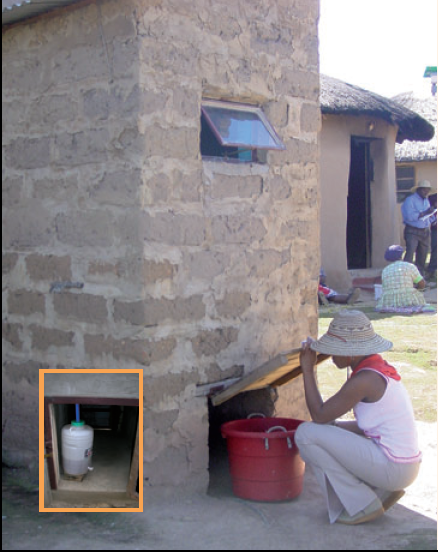Oil drums and containers
Urine from urine diversion toilets or urinals can be collected in plastic containers. Oil drums are useful for the collection of faeces. Urine collected in small containers (up to 20 litres) can be easily transported and used as fertiliser in the household's own vegetable garden. Larger containers, filled with urine have to be collected by a vehicle and can therefore be transported over longer distances. Oil drums, or half drums, can be placed directly beneath a toilet to collect faeces. Ash or other drying material has to be added regularly to prevent smells. Toilet paper can also be collected in the oil drum.
| Advantages | Disadvantages |
|---|---|
| Used oil drums and containers are available locally. Adjustable to any size of logistic operation. |
Handling of fresh faeces causing potential health risks. Collection of mixed excreta not appropriate. |
Contents
Capacity
For a family with 7 users:
- Container, polyethylene collecting urine - Capacity: about 20 litre - Filling time: 2 days
- Oil drum, polyethylene collecting faeces - Capacity: 20-100 litre - Filling time: 1 to 5 weeks
Applying conditions
- Oil drums and containers can be used in areas with hard sub surface and high ground water tables.
- Not suitable for the collection of mixed urine and excreta.
- Collection of oil drums and containers at community level has to be made functioning beforehand and measures have to be taken to guarantee hygienic safety. Sizes and weights must be manageable.

|
External links
- General information about Oil drums and containers www.gtz.de/ecosan www.waste.nl
- The Philippines www.caps.ph
- India www.sulabhinternational.org
